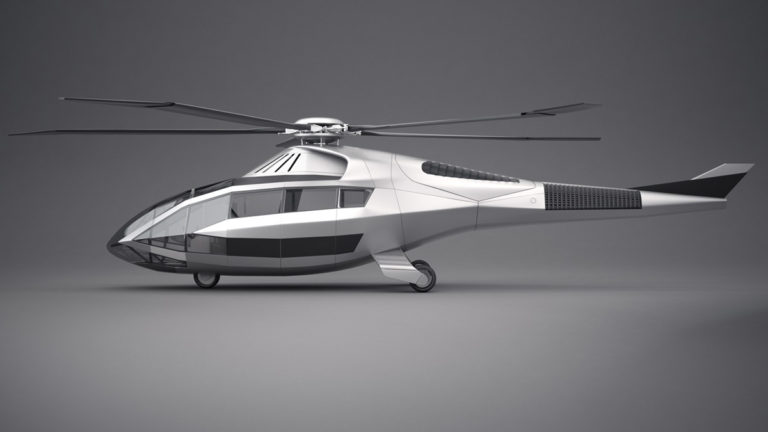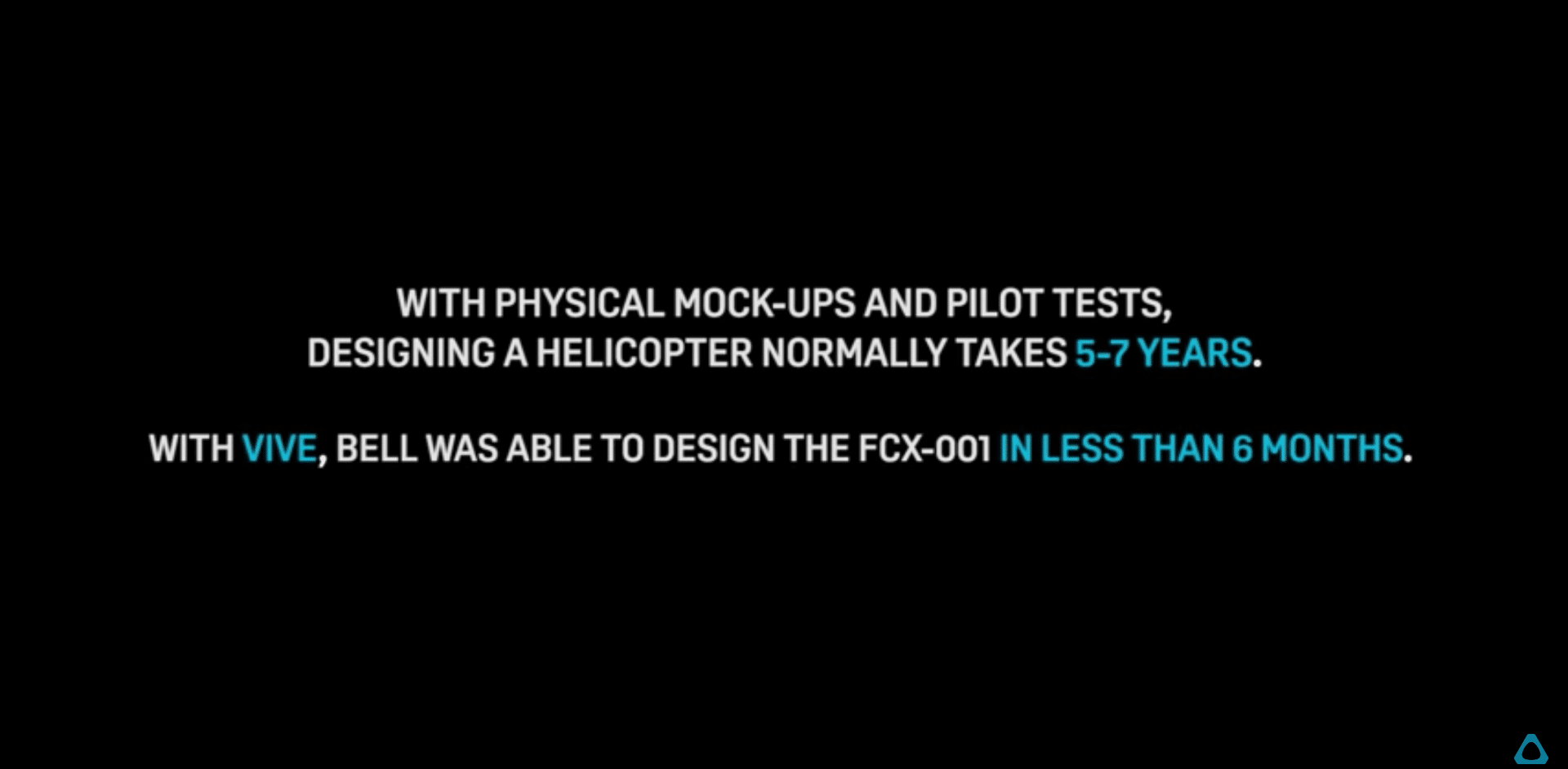
Data Point of the Week is ARtillry’s weekly dive into data from around the XR universe. Spanning usage and market-sizing data, it’s meant to draw insights for XR players or would-be entrants. To see an indexed archive of data briefs and slide bank, subscribe to ARtillry Pro.
XR’s current stage of enterprise penetration is all about getting over adoption humps. And that’s a process of education and countering typical organizational inertia. Though that continues to lumber forward (we predict a 2020 tipping point), the best accelerant is ROI proof points.
The latest comes from Bell Helicopter, which reports that its FCX-001 concept aircraft achieved 10x faster design cycles using VR, compared with its non-VR baseline. Specifically, the five-year design process was completed in six months using HTC Vives for design and review.
Project tasks that VR was able to streamline include the iterative process of draft drawings, pilot testing and focus groups. It also replaced time-consuming and static physical models in favor of CAD models that were imported to Unity for real-time testing and feedback loops.

So why is this significant? First, it’s a clear ROI boost, given that time is money on expensive projects like helicopter design. But moreover, this is at the high end of the productivity deltas we’ve seen yet in enterprise XR adoption. Most of the case studies we’ve seen are about half that.
In the industrial scenarios we’ve examined (mostly industrial AR assistance), the productivity delta is 15-99 percent in terms of completion time. The higher end of that spectrum comes from the impressive gains that Lockheed Martin achieved using Scope AR software on a Hololens.
Putting Bell Helicopter’s reported figures in perspective, 10x is about a 90 percent reduction in project time. When examining units output (as opposed to time saved), the math is a bit different. In the latter case, 100 percent growth equals 2x in terms of converting percentages to multiples.
In either case, this is exactly what enterprise XR needs. The higher the ROI, the greater ammunition to break through the aforementioned enterprise inertia. Even though the ROI case is validated in many cases for enterprise XR, organizational and cultural inertia are powerful forces.
This invokes Visicalc inventor Dan Bricklin’s rule of thumb for disruption. From his pioneering work with spreadsheet technology, he believes that new tech has to be two orders of magnitude (100x) better to get over the adoption hump. The bar may not really be that high but point taken.
“You have to be two orders of magnitude — that’s 100 times better — than what came before,” he said at ARiA. “Doing a good-sized spreadsheet by hand took hours, but with an electronic spreadsheet, you can build it in minutes. That’s night & day difference, not just a little better.”
We’ll keep our eyes open for proof points and case studies, including forthcoming examination of data that Scope AR presented at AWE Europe. It’s all leading up to our predicted 2020 tipping point for enterprise AR. Like enterprise smartphone adoption, it will build slow then happen fast.
For deeper XR data and intelligence, join ARtillry PRO and subscribe to the free ARtillry Weekly newsletter.
Disclosure: ARtillry has no financial stake in the companies mentioned in this post, nor received payment for its production. Disclosure and ethics policy can be seen here.
Header image credit: Bell Helicopter, HTC
